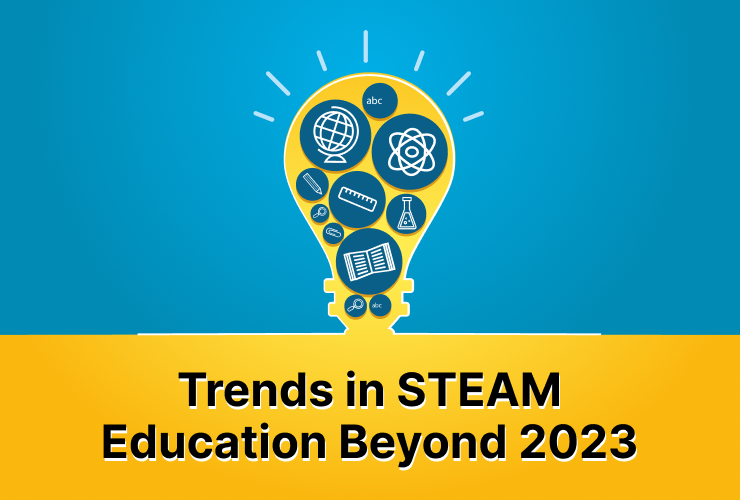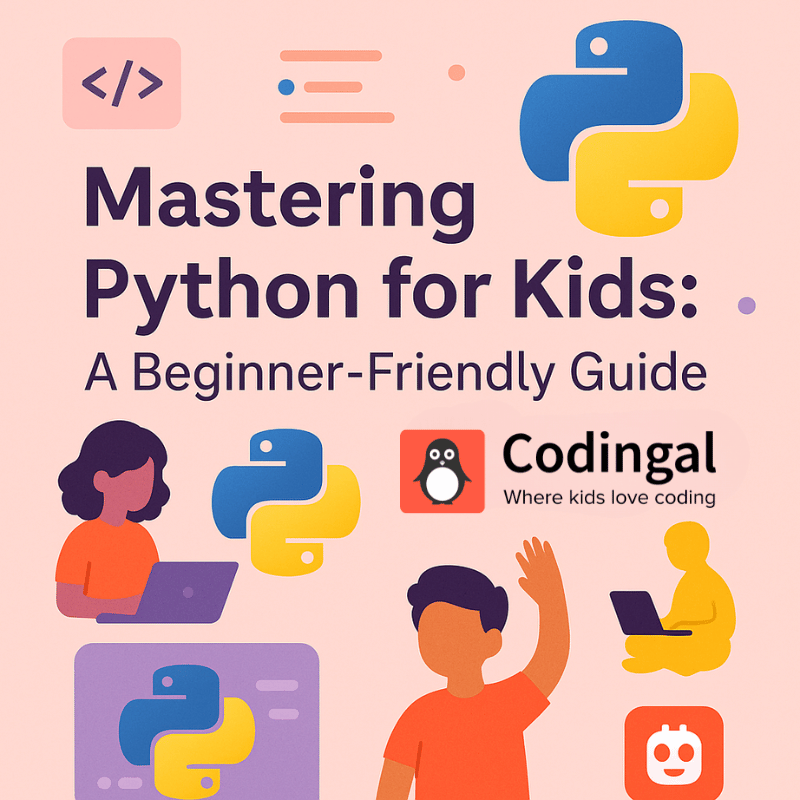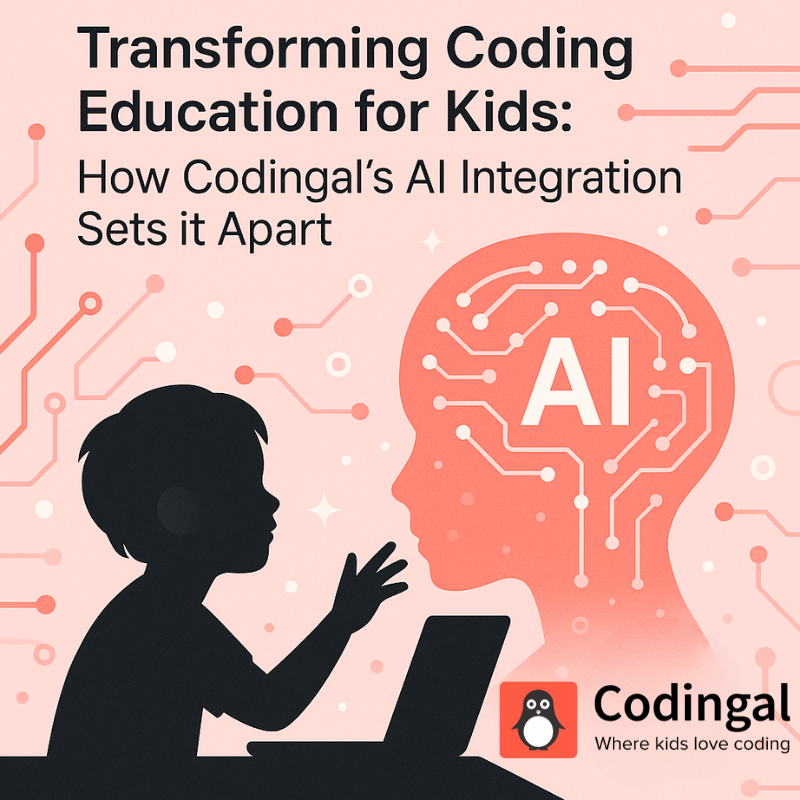Table of Contents
Some Popular Trends in STEAM Beyond 2023
Virtual Reality and Augmented Reality
Robotics and Artificial Intelligence
Project-Based Learning
Interdisciplinary Learning
Final Thoughts
STEAM education refers to an interdisciplinary approach to learning that incorporates Science, Technology, Engineering, Arts, and Mathematics into the curriculum. The motive of this program is to provide students with a well-rounded education that allows them to develop critical thinking, problem-solving, creativity, and innovation skills.
The importance of STEAM education for kids cannot be overstated. It helps to foster an interest in science and technology, as well as encourage creativity and innovation. It also prepares children for careers in a rapidly changing world where technology constantly evolves.
STEAM education is becoming increasingly popular in schools and educational programs for kids. One current trend is integrating technology and digital tools, such as coding and robotics, into STEAM education to enhance learning and engage students. Another trend emphasizes real-world problem-solving and project-based learning, where students apply their knowledge and skills to solve real-world challenges.
Codingal also provides the best scratch coding for kids classes, including the STEAM Education program to help them build curiosity, find solutions to a problem, and be creative in finding the solutions. In this article, we will learn some current STEAM education trends and how they can help kids build bright careers in the future.
Some Popular Trends in STEAM Beyond 2023
Here are some popular trends in STEAM education:-
1. Virtual Reality and Augmented Reality
Virtual Reality (VR) and Augmented Reality (AR) is rapidly gaining popularity in the field of education, particularly in STEAM (Science, Technology, Engineering, Arts, and Mathematics) education. Here are some ways VR and AR can enhance STEAM education and the advantages of using these technologies for kids:
- Immersive Learning: VR and AR create a highly immersive learning experience that allows students to explore and interact with 3D models and simulations of complex concepts. This approach can help students gain a deeper understanding of STEAM topics.
- Visualizations and Simulations: VR and AR can create visualizations and simulations that are difficult or impossible to replicate in real life, allowing students to explore abstract concepts in a safe and controlled environment.
- Increased Engagement: VR and AR can make STEAM education more engaging by providing interactive and engaging experiences that make learning fun.
- Personalized Learning: VR and AR can be customized to students’ individual needs and learning styles, allowing them to learn at their own pace and in their way.
- Collaboration: VR and AR can facilitate collaboration among students, allowing them to work together in virtual environments and share ideas.
- Accessibility: VR and AR can make STEAM learning more accessible to students with disabilities, allowing them to explore concepts and topics that may be difficult to experience in real life.
2. Robotics and Artificial Intelligence
Robotics and artificial intelligence (AI) are becoming increasingly integrated into STEAM education for kids. Using robotics and AI in STEAM learning offers numerous benefits for children, including:
- Enhancing problem-solving skills: Robotics and AI encourage children to think critically and solve problems creatively and innovatively. They provide a practical and hands-on approach to learning, which is essential for developing problem-solving skills.
- Improving coding skills: Robotics and AI use programming languages such as Python, Scratch, and Arduino, which help children develop coding skills. These skills are important for the future as technology continues to advance.
- Encouraging teamwork and collaboration: Robotics and AI involve teamwork and collaboration, which are essential skills in the workplace. Children learn to work in teams and collaborate to achieve common goals.
- Stimulating creativity: Robotics and AI provide a creative outlet for children to express themselves. They can design, build, and program robots, which allows them to explore their creativity and imagination.
- Enhancing spatial awareness: Robotics and AI involve designing and building physical objects, which enhances children’s spatial awareness and develops their spatial reasoning skills.
- Preparing children for the future: Integrating robotics and AI in STEAM learning prepares children for the future job market, requiring a deep understanding of technology.
3. Project-Based Learning
Project-Based Learning (PBL) is a student-centered teaching approach emphasizing active, experiential learning through project completion. It involves students working collaboratively to solve a real-world problem, investigate a question or challenge, or create a product or artifact. PBL encourages students to develop their critical thinking, problem-solving, and communication skills, as well as their creativity and innovation.
Advantages of Project-Based Learning in STEAM Education for kids:
- Engages students: PBL promotes active, hands-on learning and engages students in the learning process, making it more meaningful and relevant to them.
- Develops STEAM skills: PBL provides opportunities for students to apply and develop their skills in science, technology, engineering, art, and math (STEAM).
- Promotes collaboration: PBL requires students to work collaboratively in teams, helping them develop communication, leadership, and teamwork skills.
- Encourages creativity and innovation: PBL encourages students to think creatively and develop innovative solutions to real-world problems or challenges.
- Fosters inquiry-based learning: PBL promotes inquiry-based learning, where students ask questions, investigate, and analyze information, promoting curiosity and lifelong learning.
Some examples of project-based learning in STEAM Education include:
- Design and Build a Sustainable House
- Create a Robot
- Investigate a Local Environmental Issue
- Develop a Mobile App
- Design a Sustainable Transportation System
Interdisciplinary Learning
Interdisciplinary learning refers to connecting and integrating knowledge and skills from multiple academic disciplines or subject areas. It involves synthesizing ideas, concepts, and practices from different fields to solve complex problems, answer real-world questions, and fully understand a topic. In STEAM education, interdisciplinary learning is particularly important as it fosters creativity, innovation, and critical thinking, essential skills for future growth.
One of the key advantages of interdisciplinary learning in STEAM education for kids is that it enables them to make meaningful connections between different subjects and understand their relevance in the real world. It also encourages them to think outside the box and innovatively apply their knowledge and skills. Additionally, interdisciplinary learning can help kids develop a broader perspective, appreciate diversity, and become more adaptable and resilient in changing circumstances.
Examples of interdisciplinary learning in STEAM education include designing and building a solar-powered car, creating a video game that teaches math concepts, and developing a health app that uses data analysis to track fitness and nutrition.
Final Thoughts
STEAM education is essential for children as it prepares them for the future by providing them with the skills and knowledge they need to succeed in a world that is becoming increasingly technological and interconnected. In addition, STEAM education allows children to develop important skills such as communication, collaboration, and teamwork. Children learn to communicate effectively, share ideas, and work towards a common goal by working together on science, technology, engineering, arts, and mathematics projects.
At Codingal, we have incorporated STEAM Education into our scratch programming language curriculum to prepare young people for a future of taking in information, adapting to it, and continuing to grow with the ever-evolving world around them.
Codingal is an online coding platform for kids that combines coding with STEAM-related activities. The innovative and entertaining curriculum goes beyond STEM education and is based on the BIDE, STEAM, and BLOOM Taxonomy. Codingal encourages children to engage in their learning creatively, critically, and confidently.












